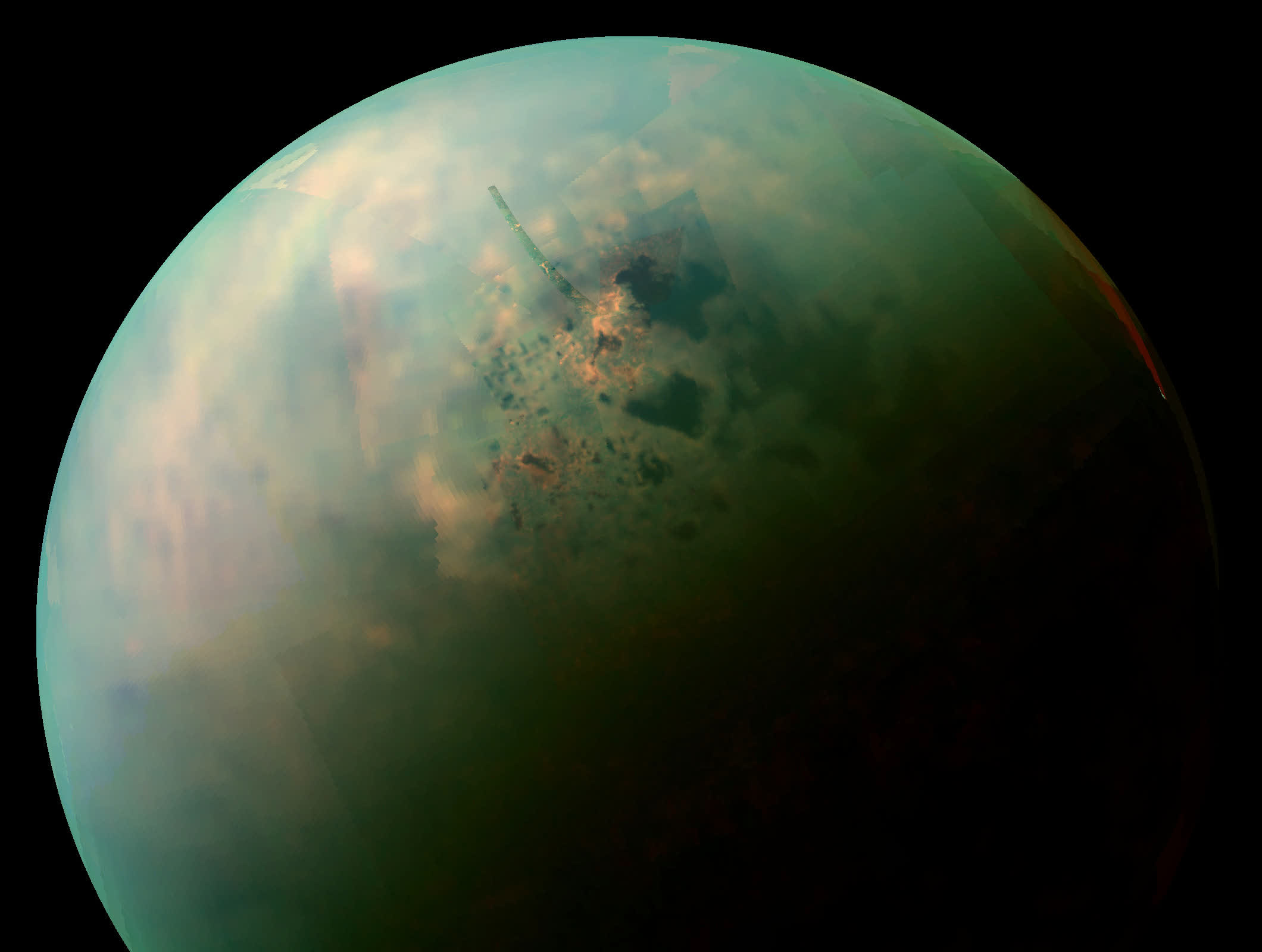Why it matters: Saturn's largest moon, Titan, is one of the most interesting bodies in our solar system due to how similar it is to Earth. Like our home planet, it has a dense atmosphere as well as seasonal weather cycles, and it's the only other planet or moon in which we've found evidence of surface liquid. These factors make it a prime candidate for further study to help us better understand the secrets of the universe and how life can form, which is exactly what one group of researchers have been busy doing.
Led by principal investigator Tomče Runčevski from Southern Methodist University, the team managed to recreate Titan's unique conditions in small glass cylinders here on Earth. The team zeroed in on two specific molecules, as Runčevski explains.
"We found that two of the molecules likely to be abundant on Titan --- acetonitrile (ACN) and propionitrile (PCN) --- occur predominantly in one crystalline form that creates highly polar nano surfaces, which could serve as templates for the self-assembly of other molecules of prebiotic interest." – Tomče Runčevski
Much of what is currently know about Titan can be credited to NASA's Cassini-Huygens mission, which explored Saturn and Titan, respectively, following their launch in 1997. The mission officially ended in 2017 with the planned destruction of Cassini by plunging it into Saturn's atmosphere.
Scientists already know a lot about the properties of ACN and PCN here on Earth, but their behavior in a chilly environment like Titan hasn't been studied until now. Through a complex process that simulates atmospheric rainfall, crystals are formed and were analyzed using synchrotron and neutron diffraction instrumentation, spectroscopic experiments and calorimetric measurements.
"Our research revealed a lot about the structures of planetary ices that was previously unknown," Runčevski said. "For example, we found that one crystalline form of PCN does not expand uniformly along its three dimensions."
With any luck, the research will help scientists learn even more about the surface of Titan ahead of NASA's planned Dragonfly mission to the icy moon in 2027.
The researchers presented their findings at the recent American Chemical Society (ACS) fall meeting. You can check out the full media briefing embedded above to learn more.
